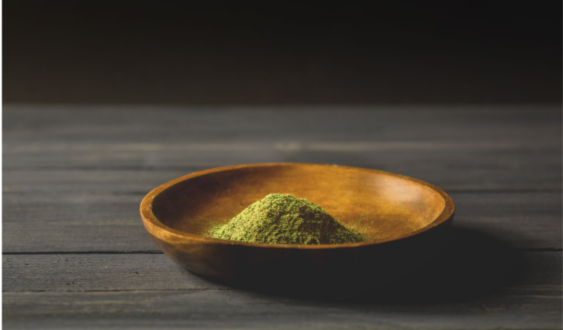
The Origins and Cultivation of Kratom: From Southeast Asian Forests to Canadian Homes
Table of Contents
ToggleMitragyna speciosa, commonly known as kratom, has made a remarkable journey from the lush rainforests of Southeast Asia to households across Canada. This botanical has gained significant attention for its traditional uses and unique properties, with many Canadians now seeking high-quality options like Green Maeng Da kratom powder and other varieties. Understanding the origins, cultivation methods, and journey of kratom provides valuable context for those interested in this fascinating plant.
Natural Habitat and Native Growth
Kratom thrives naturally in the tropical climate of Southeast Asia, particularly in:
Thailand: Historically, kratom grew abundantly in the southern provinces, where it has been part of traditional culture for centuries. The plant flourishes in Thailand’s humid, rainy conditions and mineral-rich soil.
Malaysia: Malaysian kratom (often called “Malay” in vendor terminology) grows primarily in the northern regions bordering Thailand. These trees often develop distinctive alkaloid profiles due to specific regional soil conditions.
Indonesia: Currently the primary source of the global kratom supply, particularly from the islands of Borneo (Kalimantan) and Sumatra. The different microclimates across these islands contribute to variations in kratom’s properties.
Papua New Guinea: Though less commonly discussed, Papua New Guinea also has native kratom populations with unique characteristics.
In its natural habitat, kratom trees can reach impressive heights of 50-80 feet (15-24 meters) with trunks up to 3 feet (1 meter) in diameter. The trees produce glossy leaves that can grow to nearly 8 inches (20 cm) long and 5 inches (12 cm) wide, with distinctive vein colors that help classify the different varieties.
Traditional Cultivation Methods
For generations, kratom has been cultivated using traditional methods that have been refined over centuries:
Propagation Techniques
In traditional settings, kratom is typically propagated through:
Stem cuttings: Mature branches are cut diagonally, treated with rooting hormone (traditionally made from natural substances), and planted in consistently moist soil until roots develop.
Seed propagation: Though more challenging due to kratom seeds’ brief viability period (less than 72 hours), some traditional farmers specialize in seed collection and rapid planting.
Growth Cycle and Harvesting
The growth cycle of kratom in traditional cultivation follows seasonal patterns:
Initial growth: Young plants are typically protected from direct sunlight and excessive rain until established.
Maturation period: Trees require 2-3 years before the first substantial harvest, with optimal alkaloid content developing in mature leaves.
Harvesting techniques: Traditional harvesters select leaves based on maturity, vein color, and seasonal timing, often using long poles with attached cutting tools to reach higher branches.
Seasonal considerations: Many traditional farmers report that alkaloid content varies with seasonal changes, with the most potent leaves often harvested just before the dry season.
The Creation of Different Strains
The variety of kratom strains available to Canadian consumers results from several factors in traditional cultivation:
Vein Colors and Their Development
The distinctive vein colors that define kratom varieties develop through:
Maturation timing: Red veins typically indicate mature leaves, while white veins are often found in younger leaves.
Sunlight exposure: Leaves receiving more direct sunlight tend to develop different alkaloid profiles than those growing in shadier portions of the canopy.
Genetic factors: Regional varieties have developed distinct genetic characteristics over generations of growth in specific microclimates.
Processing Methods
Traditional processing significantly influences the final product:
Drying techniques: The drying method dramatically affects the final properties:
- Sun drying typically produces red varieties
- Indoor drying often creates green varieties
- Combined methods may result in white or gold varieties
Fermentation: Some varieties undergo controlled fermentation processes, creating distinct alkaloid profiles and effects.
Grinding specifics: The traditional grinding process varies by region, with some areas using stone grinders while others use mechanical methods, affecting the texture and potency of the final powder.
Modern Cultivation Developments
As global demand has increased, cultivation methods have evolved:
Plantation Cultivation
To meet growing demand, structured plantation cultivation has developed:
Organized planting: Trees are systematically planted with optimal spacing for maximum growth and harvest accessibility.
Irrigation systems: Modern plantations implement efficient watering systems to maintain ideal soil moisture levels.
Selective breeding: Some producers have begun selectively breeding trees for desirable characteristics like alkaloid content, growth rate, and disease resistance.
Sustainability Challenges and Solutions
The increased demand presents both challenges and opportunities:
Deforestation concerns: Expanding kratom production has raised concerns about forest conversion in some regions.
Sustainable solutions: Progressive farmers have implemented agroforestry approaches, growing kratom alongside other native species to maintain ecosystem balance.
Certification developments: Emerging sustainability certification programs aim to ensure ethical and environmentally responsible cultivation practices.
From Harvest to Canadian Consumers
The journey from Southeast Asian trees to Canadian households involves several crucial steps:
Traditional Harvesting and Initial Processing
The process begins with careful selection:
Leaf selection: Experienced harvesters select leaves based on maturity, size, and vein color.
Initial cleaning: Freshly harvested leaves are washed to remove debris and contaminants.
Drying process: Leaves are dried using methods specific to the desired strain type, with careful attention to humidity and temperature.
Quality Control Measures
Before export, quality control has become increasingly important:
Contaminant testing: Reputable producers test for potential contaminants including heavy metals, pesticides, and microbial presence.
Alkaloid analysis: Some premium producers conduct alkaloid profile testing to ensure consistent potency.
Storage considerations: Proper storage using moisture-resistant packaging helps preserve freshness during transit.
Importation Challenges
The journey to Canada involves navigating complex regulations:
Regulatory status: Kratom exists in a complex regulatory space, neither explicitly approved nor prohibited for consumption in Canada.
Importation practices: Established Canadian vendors work with experienced importers who understand the proper channels for bringing botanical products into the country.
Quality verification: Reputable Canadian vendors conduct additional testing upon receipt to verify product quality and safety.
The Canadian Kratom Landscape
Canada has developed its own unique relationship with this botanical:
Growing Canadian Interest
Several factors have contributed to increasing Canadian interest:
Wellness exploration: Many Canadians are exploring traditional botanicals as part of their wellness practices.
Community development: Online and local communities have formed around shared experiences with kratom.
Educational initiatives: Educational resources about responsible use have expanded alongside growing interest.
Responsible Vendor Practices
Quality-focused Canadian vendors typically emphasize:
Transparent sourcing: Information about the origin and testing of products.
Educational resources: Materials explaining different varieties and their traditional uses.
Quality control: Multiple testing stages to ensure product safety and potency.
Proper storage: Climate-controlled storage facilities to maintain freshness in Canada’s variable climate.
Conclusion
The journey of kratom from Southeast Asian forests to Canadian homes represents a fascinating intersection of traditional botanical knowledge and modern global commerce. Understanding the origins, cultivation methods, and processing techniques provides valuable context for those interested in exploring this unique botanical.
As interest continues to grow, supporting responsible and sustainable practices throughout the supply chain ensures that this traditional botanical can be appreciated while respecting both its cultural heritage and the environments where it naturally grows.


